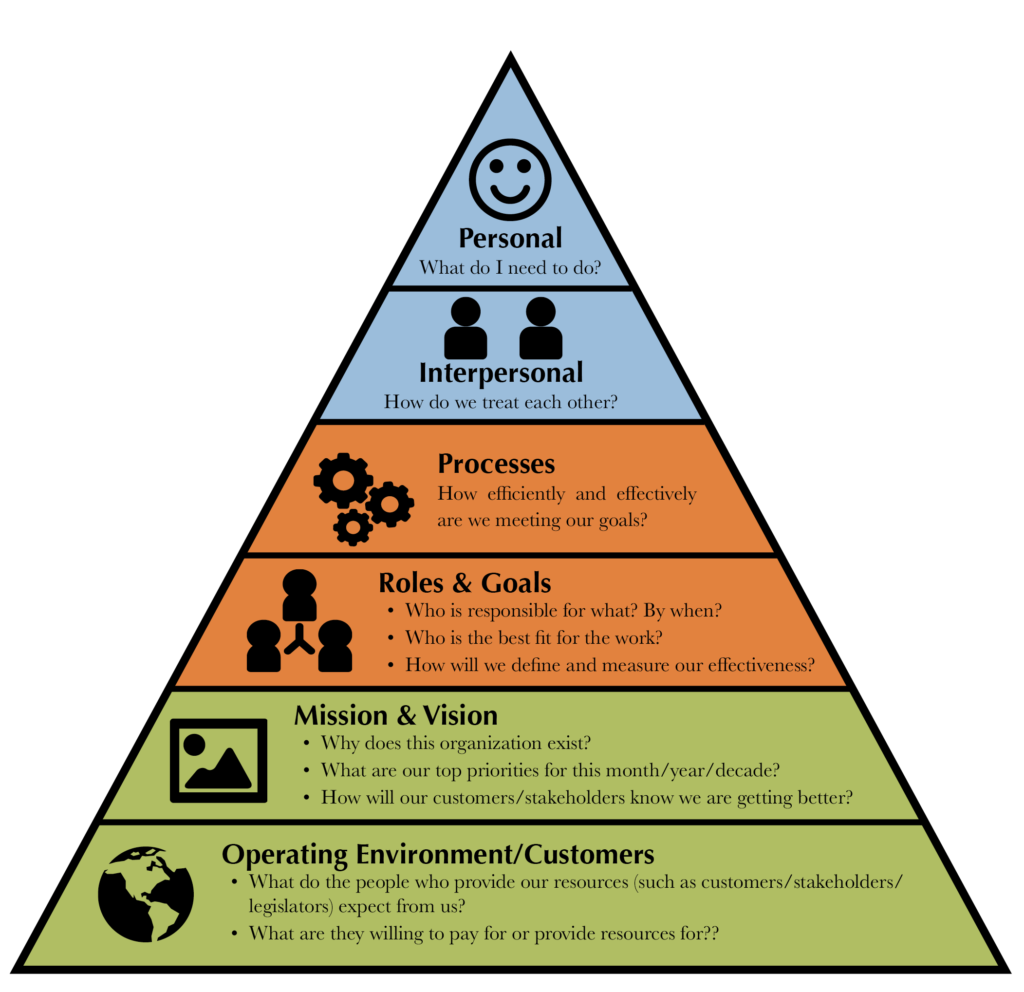Align Individual & Organizational Needs
 Usually, when something goes wrong in an organization, somebody gets the blame. But how often is it really that person’s fault? If you are working in a team, or as part of a larger group, the research shows that far more often than not, the root cause is found somewhere else.
Usually, when something goes wrong in an organization, somebody gets the blame. But how often is it really that person’s fault? If you are working in a team, or as part of a larger group, the research shows that far more often than not, the root cause is found somewhere else.
Misunderstandings or miscommunication about what needs to be accomplished is the most common cause of mistakes. Clarifying expectations up-front and in writing goes a long way towards avoiding unnecessary mix-ups and misinterpretations- and the blame that goes with them. The clearer you can be about your vision for what will be new or different, the better your chances for success. If multiple people are involved, it is critical that you identify what each person wants and what they believe success looks like. Even slight differences in expectations can lead to disagreements and significant rework later. If differences are significant, it is important to know that up-front, and then focus on areas of agreement and common interest as a means for making progress.
Another common problem area is confusion around how decisions will be made, who should do what parts of the work, and what process will be used to get things done. Different expectations in any of these areas is likely to result in conflict and can easily cause poor performance and unacceptable outcomes. Getting clear at the start of a project about:
- What you need to do
- What different people want
- How decisions will be made
- Who will do the work, and
- How the work will be done
can save countless hours of frustration and greatly increase your chances of success.
An added bonus in gaining this type of clarity at the start of a project is that it actually promotes better relationships between the people involved and increases individual motivation for getting the work done. This is especially true when people feel they have enough information to visualize what will happen, why it is important to them, and how they can most effectively play their part in making the project successful. That is because humans naturally feel motivated when their psychological needs for autonomy (choice), relatedness (connection), and competence (effectiveness) are met. Having a clear understanding of what needs to be done, how they can contribute, and how decisions will be made frees people up to bring out their best when solving problems and making improvements. It clears-up paths of communication and lets everyone focus together on the issue at hand. Lack of clarity leads to confusion, delay, and blame as people fight for control, try to avoid the situation, or simply do nothing as their fight or flight fear responses kick-in. A little up-front work and planning provides an agreed upon road map that helps everyone feel safer. It also goes a long way towards helping people bring out the best in themselves and each other- which also helps guarantee a project’s success.
Ways Thrive At Work Can Help
Here at Thrive At Work, we teach tools that help you understand the tasks you need to accomplish in ways that promote and build relationships. Our pyramid shaped Organizational Hierarchy of Needs tool helps you clarify & align customer needs, the organizational mission, and roles & goals to improve your processes, relationships, and individual engagement. It is also a great tool for pinpointing the root cause of problem when conflicts arise or when things seem confused but you don’t know why. It is especially helpful for managers and supervisors who want to understand the big picture or anyone who wants to think through the tasks and relationships needed for developing strategic plans for their organization- including mission, vision, performance measures, and related short & long term goals.
- Our Align Individual and Organizational Needs workshop teaches leaders and work teams how to use the Organizational Hierarchy of Needs tool for both root cause problem solving and organizational planning. A modified version of this class can be used to develop a strategic plan for your organization, including mission, vision, performance measures, and related short & long term goals.
- Our G.R.O.W. Process workshop teaches leaders and work teams how to bring out the best in themselves and others as they clarify goals, identify resources, determine options, and decide on a way forward. This is a simple and memorable process that can be used to help accomplish any task or improve any process.
- Our Lead With Your T.O.E.S. workshop teaches leaders and work teams how to relate positively with each other for stronger outcomes. It can be used effectively to further optimize relationships and effectiveness when things are going well, and is also effective in particularly tense situations when other methods have failed.
- We are experts in group facilitation. If your group needs help getting started or needs repair, consider hiring us to facilitate.
- We can help your group learn how to catalyze synergy and creativity by learning about their unique individual strengths and overall group strengths. We can help you transform formerly agitating differences into creative partnerships.